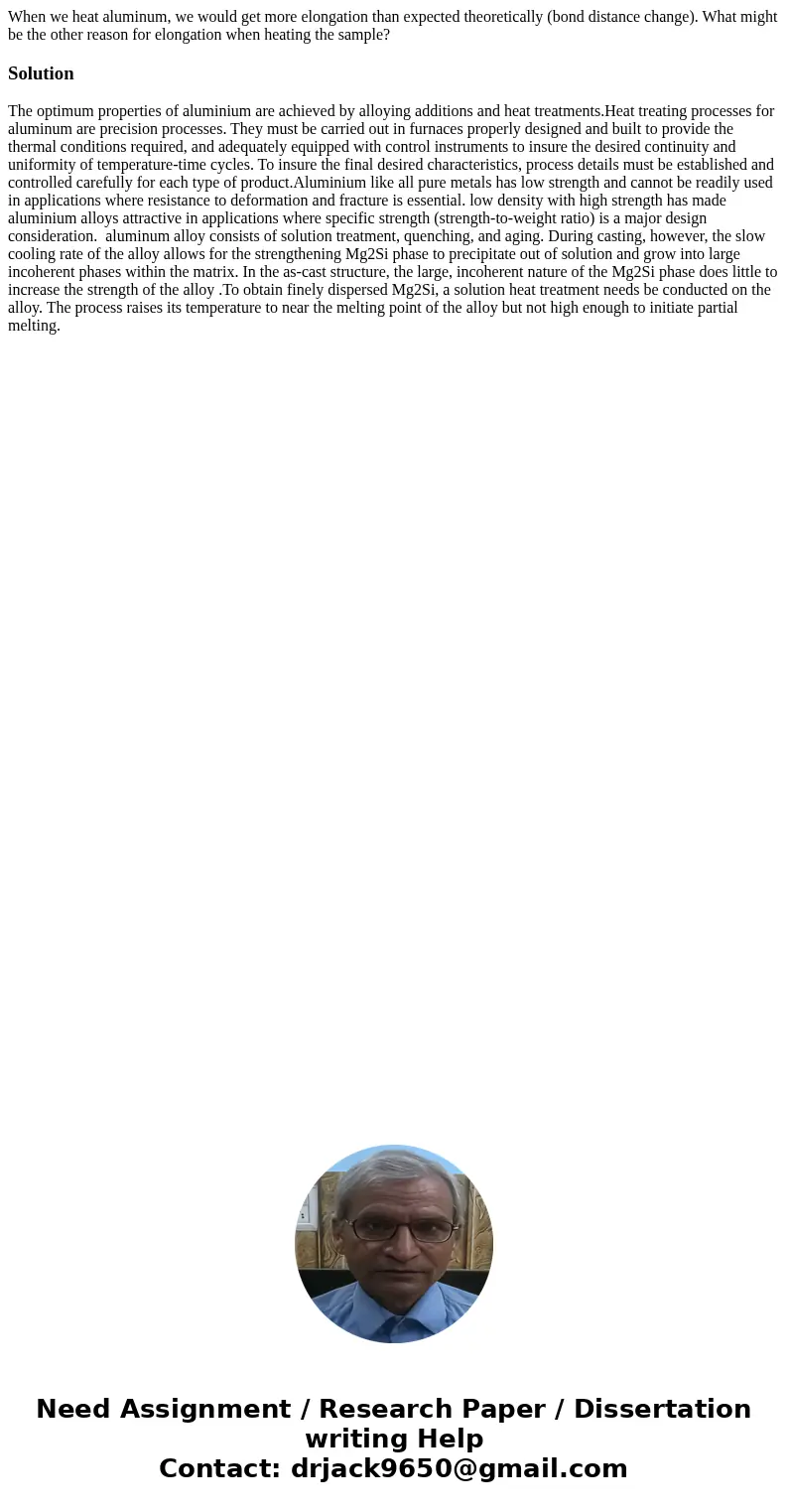When we heat aluminum we would get more elongation than expe
When we heat aluminum, we would get more elongation than expected theoretically (bond distance change). What might be the other reason for elongation when heating the sample?
Solution
The optimum properties of aluminium are achieved by alloying additions and heat treatments.Heat treating processes for aluminum are precision processes. They must be carried out in furnaces properly designed and built to provide the thermal conditions required, and adequately equipped with control instruments to insure the desired continuity and uniformity of temperature-time cycles. To insure the final desired characteristics, process details must be established and controlled carefully for each type of product.Aluminium like all pure metals has low strength and cannot be readily used in applications where resistance to deformation and fracture is essential. low density with high strength has made aluminium alloys attractive in applications where specific strength (strength-to-weight ratio) is a major design consideration. aluminum alloy consists of solution treatment, quenching, and aging. During casting, however, the slow cooling rate of the alloy allows for the strengthening Mg2Si phase to precipitate out of solution and grow into large incoherent phases within the matrix. In the as-cast structure, the large, incoherent nature of the Mg2Si phase does little to increase the strength of the alloy .To obtain finely dispersed Mg2Si, a solution heat treatment needs be conducted on the alloy. The process raises its temperature to near the melting point of the alloy but not high enough to initiate partial melting.

 Homework Sourse
Homework Sourse